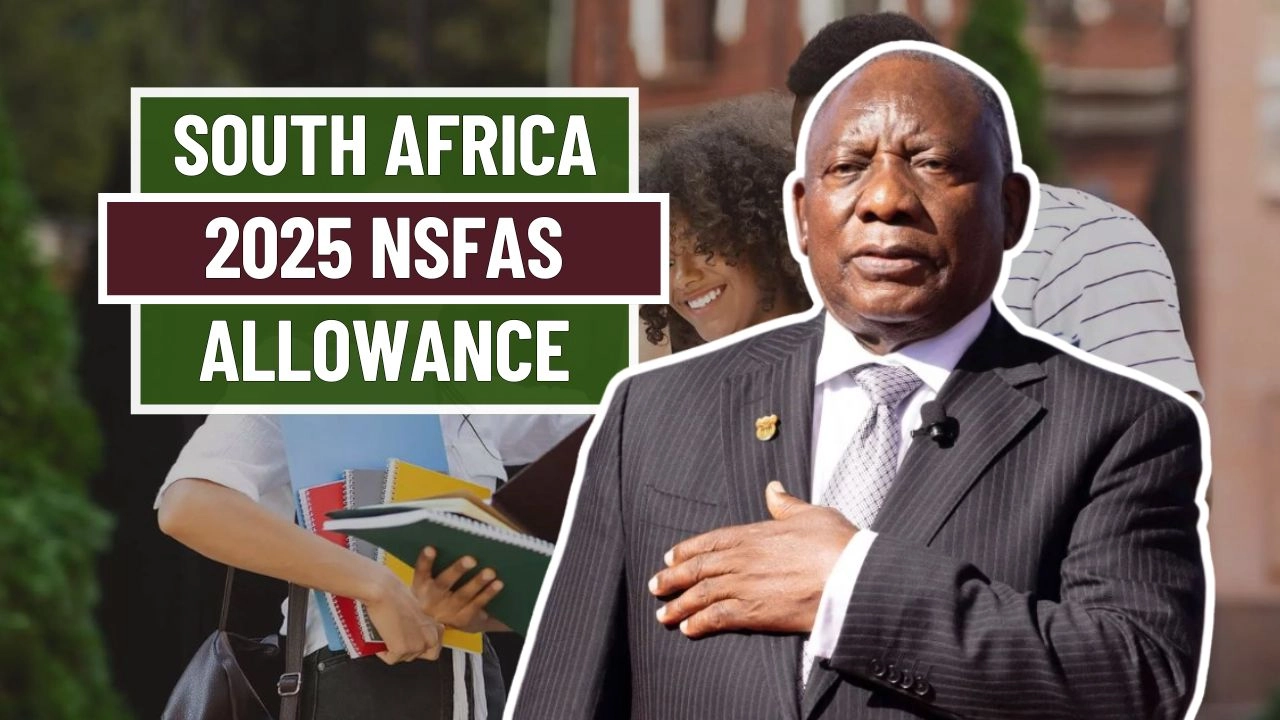In a pivotal move to strengthen student financial support, South Africa’s National Student Financial Aid Scheme (NSFAS) has introduced a revised allowance structure for 2025. This update arrives at a critical time, with inflation and living expenses continuing to strain student budgets across the country. The new model, launched in May 2025, is designed to ease the financial pressure on students enrolled in public universities and TVET colleges by broadening coverage for essential needs ranging from housing and transport to food and academic materials.
Enhanced Assistance for a Changing Educational Landscape
The restructured NSFAS allowance package includes significant changes aimed at better meeting the demands of modern student life. The updated framework offers expanded financial support across various categories, including living costs, transport, accommodation, and learning materials. These adjustments reflect the Department of Higher Education’s recognition of the increasingly diverse and costly demands of student life. Special attention has been placed on TVET students, who will see a substantial increase in their annual funding, a move intended to balance support across higher education institutions.
A Closer Look at Updated Student Support Categories
The 2025 NSFAS allowance model is shaped around a nuanced understanding of students’ varying circumstances. Accommodation subsidies depend on whether a student lives in institution-managed residences or private, accredited housing. Rates are capped based on institutional norms. Additionally, students pursuing health sciences benefit from 12-month support due to their longer academic calendar. Meanwhile, allowances for learning resources ensure students can purchase textbooks and electronic devices critical to their coursework. Notably, students enrolled in distance learning with fewer than 60 credits do not qualify for living support.
Government-Endorsed Efforts to Ease Financial Pressure

Freeman Nomvalo, the NSFAS Administrator, officially confirmed the updated allowances for 2025, underscoring the government’s intent to cushion students against ongoing economic pressures. Deputy Minister of Higher Education, Dr. Nobuhle Nkabane, emphasized that the rising cost of living, especially for students from disadvantaged backgrounds, made the increase essential. While university students will benefit from a modest 4% increase, the boost for TVET college students is significantly larger, raising the annual living allowance from R10,000 to R14,600 a 46% leap that signals a shift in focus toward equitable support.
Living Costs, Travel Needs, and Academic Demands Addressed
The newly adjusted allowances aim to address multiple areas of student life. Those living at home with their families are eligible for transport funding to cover daily travel costs. Students in approved accommodation settings benefit from housing subsidies designed to keep them focused on their academic journey rather than rental bills. Living allowances are geared specifically toward students renting privately, supporting expenses like food, hygiene products, and other essentials. On the academic front, the learning materials allowance varies depending on the student’s program, ensuring adequate support for their coursework.
Payment Channels and Disbursement Challenges in 2025
In contrast to previous expectations, a centralized NSFAS banking system for university students remains delayed due to ongoing legal complications. As a result, universities continue to handle the distribution of funds, with the first batch of disbursements scheduled from February 2025. On the other hand, students at TVET colleges benefit from a more streamlined system. Their funds are deposited directly into personal bank accounts, a process that has reduced delays and improved consistency in financial support.
Ensuring Accountability Through Verification
For the 2025 academic year, NSFAS has granted provisional funding to close to 800,000 students, marking a significant step toward expanding access to higher education. However, the release of these funds hinges on verification from each student’s institution. This step is crucial in ensuring that financial aid reaches only eligible, registered students. The verification process helps maintain the credibility of the scheme and ensures fair distribution of resources among those who genuinely need them.
Easy Access to Application Status and Updates
Students seeking updates on their financial aid status can check their progress via the official NSFAS website. By logging into the myNSFAS portal using their credentials, students can access real-time updates under the application status section. This transparency allows students to remain informed about their submissions and verify whether their documentation has been correctly processed by both NSFAS and their institution.
Building Long-Term Educational Equity Through Funding Reform
The revised NSFAS allowance structure signals a progressive shift in how South Africa supports its student population. By providing increased support, particularly for those attending TVET colleges, the government aims to reduce dropout rates and enhance student retention. While logistical hurdles like system delays still exist, the reform demonstrates a clear commitment to making higher education accessible regardless of financial background.
Moving Forward: What These Changes Mean for Students
These 2025 updates reflect a broader national effort to prioritize education in a difficult economic climate. As inflation continues to rise, the expanded allowances and improved disbursement strategies offer students a chance to focus more on their studies and less on survival. NSFAS beneficiaries are encouraged to stay engaged with official communications and complete all registration steps promptly to take full advantage of the newly introduced benefits.


